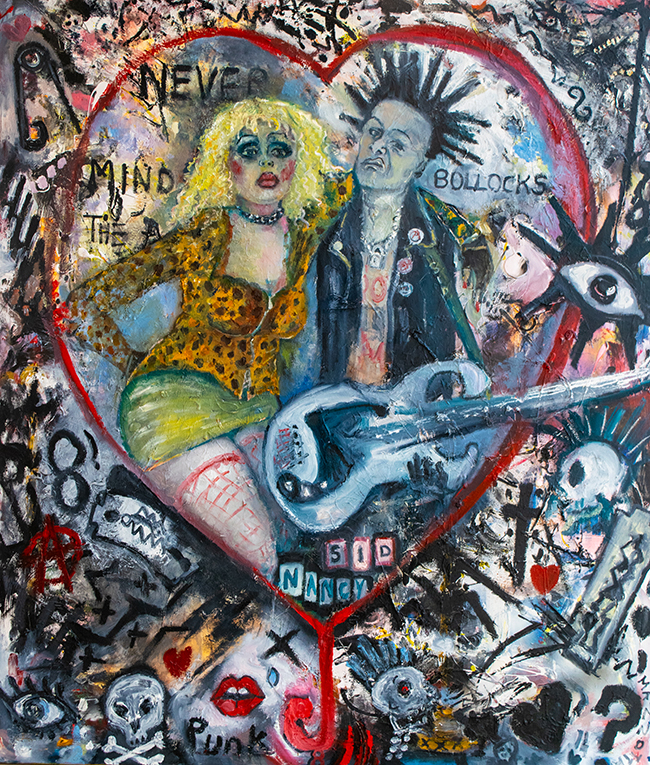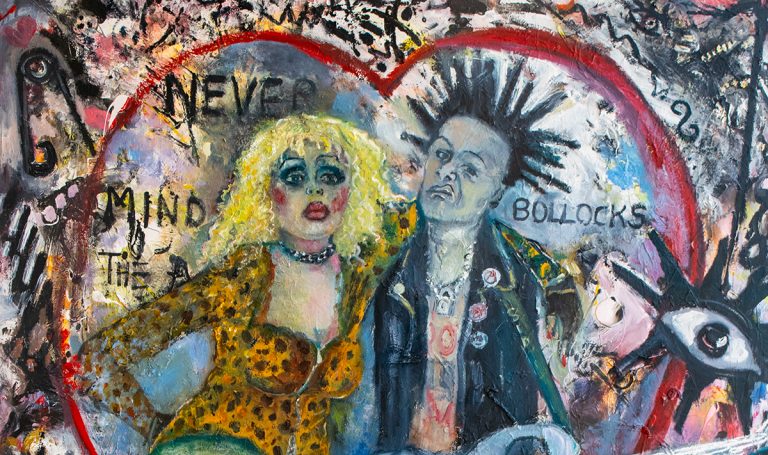Anna Mazzotta doesn’t follow trends. She observes, absorbs, and responds with a brush. Born in the UK but rooted in Italian culture, she splits her time between London and Bristol, and her work carries the energy of both cities. Her training at the Royal College of Art gave her the technical footing, but her real voice comes from somewhere else—somewhere smoky, decadent, and draped in velvet.

Her paintings are bold, funny, and a little unruly. They don’t ask permission. They walk in wearing feathers and cigarette smoke, humming an old tune, looking you dead in the eye. Mazzotta’s world is one of bygone glamour, but the human emotions she explores—desire, loneliness, vanity, heartbreak—are anything but vintage. Her work pulls from the German Expressionists of the Weimar era, especially those who danced the line between satire and heartbreak. Think Georg Grosz or Jeanne Mammen with a splash of cabaret and a whisper of heartbreak. She leans into caricature, not as comedy, but as truth.
Anna’s paintings hang in places where people gather—hotels, restaurants, studios. They live in private collections across the world. Some were commissioned by names like Fatboy Slim and Jane Fonda. But fame doesn’t seem to drive her. She’s too interested in the people at the edges of the party. The woman reapplying lipstick in the mirror. The man waiting to be noticed. The couple clinging to each other out of something like love and something more like fear.
One of her recent paintings, a raw and layered oil piece centered on Sid Vicious and Nancy Spungen, strips all sentimentality away. What’s left is a storm. Their story is burned into punk history—violent, obsessive, tragic—and Mazzotta doesn’t flinch from any of it. She paints the chaos head-on.
The composition is claustrophobic. Sid and Nancy are pressed together in a tight, shadowy room that feels like it could cave in at any moment. There’s no clean space here—everything is smeared, slashed, or dripping. A newspaper headline, a blood-red bottle, an ashtray teetering at the edge of a table—each object is another weight on their already crumbling dynamic. You don’t need to know their story to feel the panic under the paint.
And yet, there’s a weird tenderness. The way their bodies lean in, the way her hand is almost soft on his cheek—it’s a doomed sort of love, but love nonetheless. It’s the kind of connection that burns out fast and leaves nothing behind but smoke. Mazzotta captures that with skill and something sharper: insight.
There’s nothing romanticized about this love story. She calls it “the worst part of being in love”—that part where logic goes out the window and emotion takes over. Where you can’t be reasoned with. That’s what she’s painting here—not the music, not the style, not the infamy—but the messy, irrational pull of a relationship on fire.
This painting is punk, yes. But not just in subject. In attitude. In its refusal to be polite. In its need to say something honest, even if it stings. That’s what links it to the rest of her work. Mazzotta doesn’t aim for elegance or resolution. She paints moments in flux—emotion caught mid-shift, like a stage performer between masks.
Whether it’s lovers in chaos, dancers under too-bright lights, or aging divas holding on to old dreams, her characters feel real because they are flawed. There’s always something off-kilter. A laugh too loud. A shoe untied. A smile that doesn’t reach the eyes. But that’s where the truth is, and Mazzotta knows how to find it.
Her work reminds us that beauty is messy. That glamour is a mask we choose. That feelings don’t always fit in neat little boxes. In Anna Mazzotta’s world, people are messy, loud, complicated—and she wouldn’t have it any other way.


